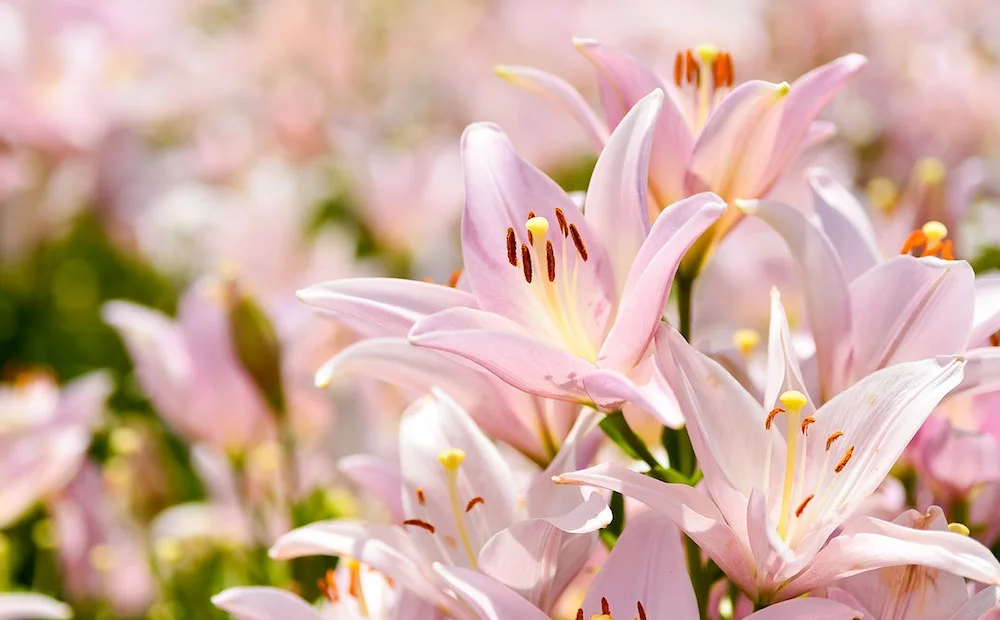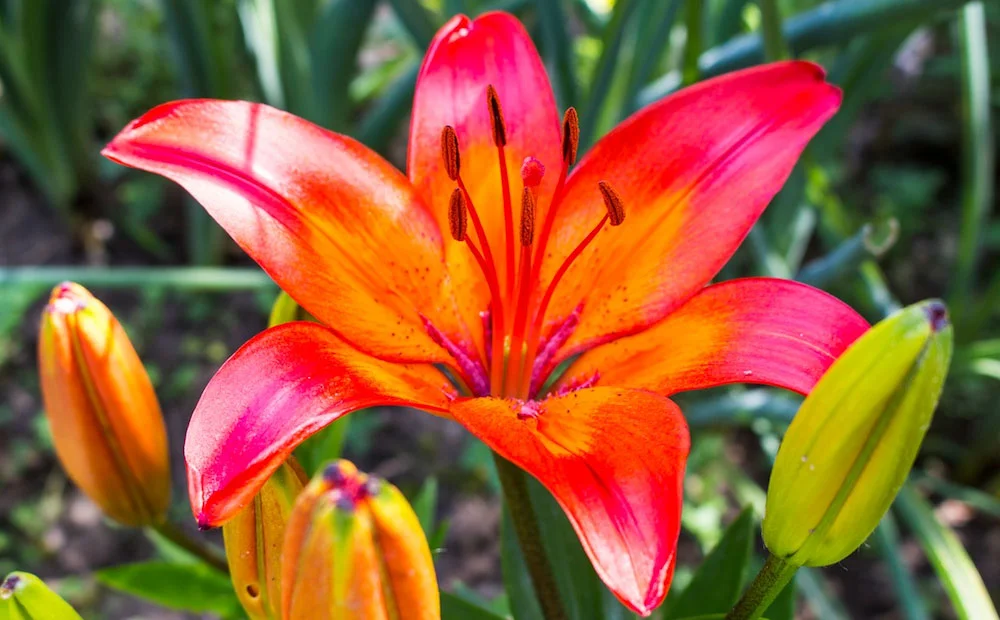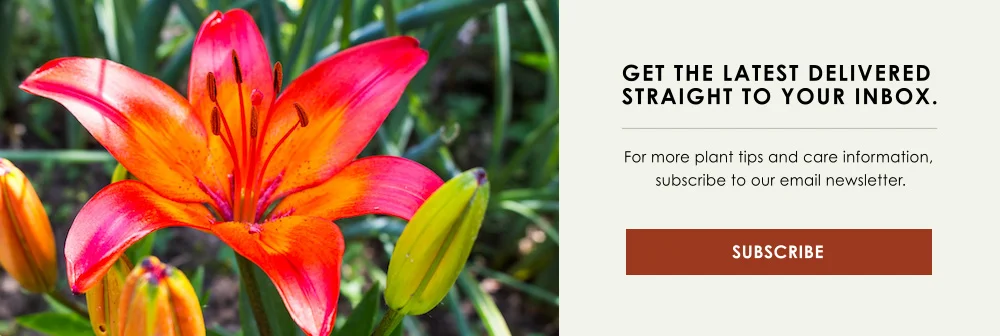GROWING LILIES
Lilies have a reputation for being some of the most iconic flowers in our gardens, with an unmistakable signature look and fragrance. These perennials are universally loved for their extravagant blooms in a dizzying array of colors. One of the most diverse families of flowers, there’s something for everyone to love, and no garden that won’t suit a lily.
TYPES OF LILIES
Narrowing down the type of lily that you want to grow might be the most difficult part of planting lilies in your garden. True lilies grow from bulbs, and many other flowers that aren’t “true” lilies but have lily in their name (like Canna Lilies, Daylilies, or Peace Lilies) are actually imposters. Even if we filter out the “un-true” lilies, there are still plenty of choices:
Asiatic Hybrids: These are some of the most popular true lily hybrids, loved for their extreme color range. While Asiatic hybrids aren’t usually the most fragrant, they still make their statement with intense shades of color.
Oriental Hybrids: These hybrids have a slower growing habit, so they take a little patience while you wait, but they’re always worth it. They boast typically large blooms with bright colors and patterns. Unlike Asiatic lilies, these bring a multi-sensory experience by tantalizing your eyes and nose. Enjoy their warm and spicy fragrance, which truly shines after dark. These might be a little more difficult to grow, but for gardeners willing to put in the extra effort, they are all the more rewarding.
American Hybrids: These hybrids embrace the American spirit and are loud and proud in the garden. Anything but ordinary, the American lily has uniquely curled petals that give their bright colors an interesting frame.
Martagon Hybrids: Even more conspicuous in the garden than the American hybrids are the Martagon, also known as Turk’s Cap lilies. The petals on these flowers are deeply curled, giving the bloom a whorling appearance that draws the eye in the garden.
Trumpet Hybrids: Trumpet hybrids are also closely related to Aurelian hybrids, both of which bring lots of color and structure to the table in mid-summer. The deep trumpets of these lilies are a great mid-summer gift that keeps giving, as their blooms last incredibly long.
Species Lilies: These are the native, wild lilies that bloom all across the world and are the building blocks for the rest of the hybrids. These original blooms aren’t shy on shape, color, size, and style, so you won’t be making any sacrifices by picking one of them to plant in the garden.
PLANTING LILIES
Lilies grow from bulbs that can be planted in either the spring or the fall, but they will need to be chilled before they’ll sprout. Fall bulbs will naturally hibernate in the winter when the temperatures drop, ready to burst back to life in the spring. You could also buy bulbs in the spring and plant them, but you’ll need to make sure you buy ones that have been pre-chilled by the grower so they’re ready to plant. Whichever season you choose for planting, keep in mind that lily bulbs out of the ground have a tendency to dry out so you should plant them close to when you purchase.
Most lilies can tolerate a little bit of shade, but you’ll really have the best results with lots of light. Too much shade and the plants will stretch, leaving you with fragile and lanky stems that look out of proportion and might even bend and fall over under the weight of the blooms. Pick a spot with lots of sun and good drainage to protect your lilies’ delicate roots from rotting. Loosen the ground a little before you plant, and mix in a little organic matter with the bulb for a nutritional boost to give you great blooms.
When you’re planting the bulbs themselves, space them about 10 inches apart so they have room to mature. Plant with the pointy side of the bulb up, generally about 3x the depth of the bulb into the soil. (Oriental lilies can be planted about 6 inches deep, but Asiatics might need to be 4-5 inches in the ground.) Cover them with soil and water them to get them established.
TAKING CARE OF LILIES
Lilies are a bit of a contradiction in that they love the sun, but they’ll still want to keep their roots cool and moist. Mulch is the solution here to insulate the ground and protect their delicate roots from heating up too much. Be careful, especially in cooler seasons, that mulch and fallen leaves don’t crowd the stem of your plant as it might encourage rot and fungus.
Lilies don’t need the same amount of fertilizer as some of our high-performance annuals do, but they certainly do like a little nutrition boost from compost and organic matter. However, if your soil isn’t the best quality, you might still want to add a little bulb food in the spring to help them start off strong.
Lilies only bloom once a year, so deadheading isn’t going to encourage any extra blooming, but taking them off can help the plant to divert nutrients to the flourishing blooms and roots where we want the extra help.
If you want fresh cut blooms to enjoy indoors in a bouquet, remember to take more than a third of the whole stem. Once the stalk outside turns brown, then you can cut it all the way to the ground.
Lilies are known for their bold appearance and are an elegant match for almost any garden. Although they are fancy-looking and might seem like they’d be high maintenance, their best-kept secret is that these perennials are actually simple to grow and care for!






